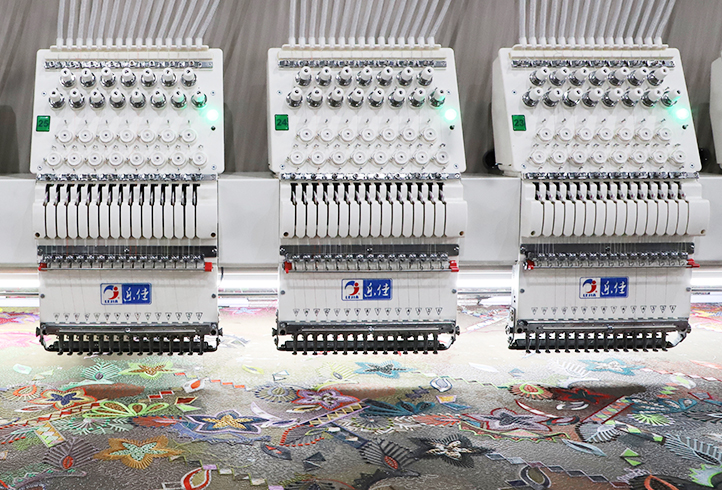Summary:
Computerized embroidery machines have revolutionized the textile industry, enabling faster and more precise embroidery...
Computerized embroidery machines have revolutionized the textile industry, enabling faster and more precise embroidery than ever before. These machines, also known as computer-controlled embroidery machines or computerized embroidery systems, use computer technology to control the stitching process. This technology has made it possible to create highly detailed and intricate designs that would be impossible to replicate by hand.
The first computerized embroidery machines were developed in the 1980s. These early machines were based on traditional mechanical embroidery machines but were controlled by a computer program. The program controlled the movement of the needle and the stitching process, allowing for more precise and consistent embroidery.
As technology has advanced, so have computerized embroidery machines. Today's machines are more advanced and user-friendly than ever before. They can be programmed to create a wide variety of designs, from simple patterns to highly detailed and complex images. Some machines even have the ability to embroider photographs and other digital images.
One of the key advantages of
computerized embroidery machines is their speed. These machines can embroider designs much faster than a human can, making them ideal for large-scale production runs. They also have the ability to automatically adjust for different fabric thicknesses and types, ensuring that the stitching is always perfect.

Another advantage of computerized embroidery machines is their precision. These machines can create designs that are highly detailed and intricate, which would be impossible to replicate by hand. They also have the ability to automatically adjust for different fabric types and thicknesses, ensuring that the stitching is always perfect.
Computerized embroidery machines also offer a greater degree of flexibility than traditional embroidery machines. They can be programmed to create a wide variety of designs, from simple patterns to highly detailed and complex images. Some machines even have the ability to embroider photographs and other digital images.
The software that runs computerized embroidery machines has also improved over time. These software programs are now more user-friendly and have a wide range of features, including the ability to import designs from a variety of file formats, such as JPEG and PNG. This makes it easy for users to create custom designs and logos.
Computerized embroidery machines are also more efficient than traditional embroidery machines. They can be programmed to automatically adjust for different fabric types and thicknesses, ensuring that the stitching is always perfect. This eliminates the need for manual adjustments, which can be time-consuming and prone to errors.
The cost of computerized embroidery machines has also decreased over time. These machines are now more affordable and accessible than ever before, making them a popular choice for small businesses and home-based embroidery operations.
In conclusion, computerized embroidery machines have come a long way since their inception in the 1980s. These machines are now more advanced, user-friendly, and efficient than ever before. They offer a wide range of benefits, including speed, precision, flexibility, and cost-effectiveness. With their ability to create intricate designs and automatically adjust for different fabric types and thicknesses, computerized embroidery machines are an essential tool for any textile business or home-based embroidery operation.


